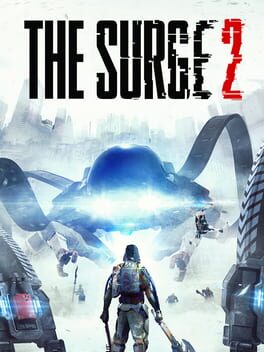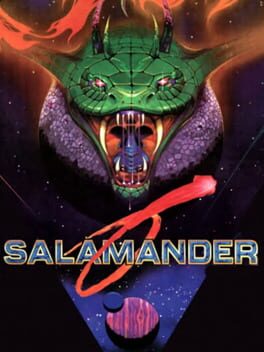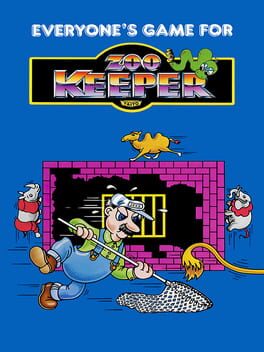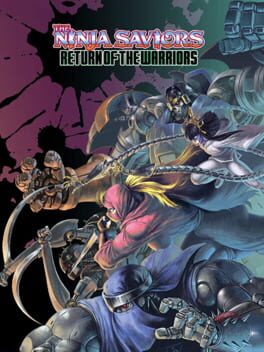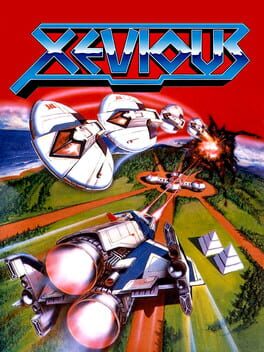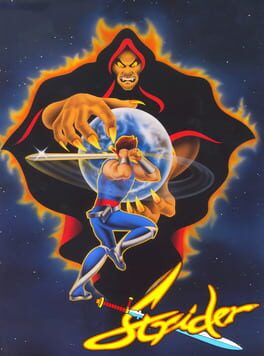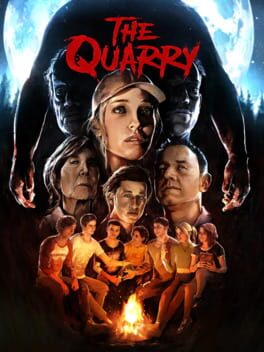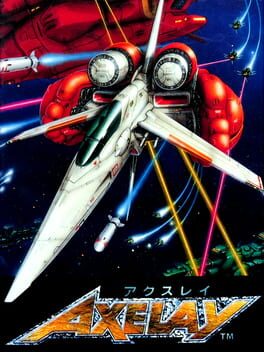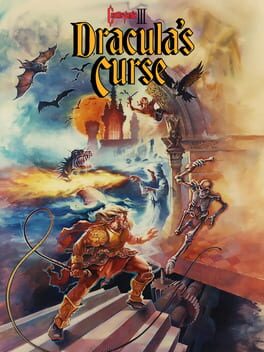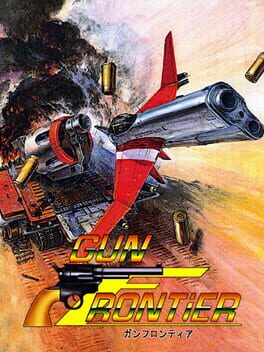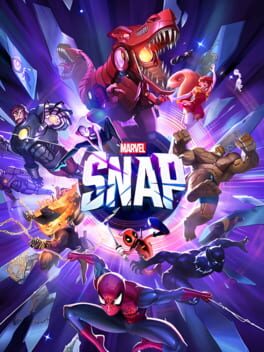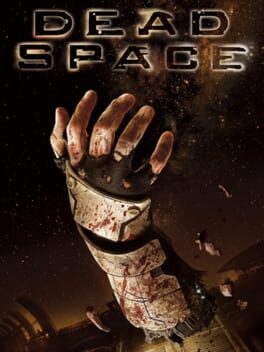ogremode
2019
Really solid Souls-like--in fact, probably my favorite of these not made by FromSoftware. Its strength is its level design and enemy placement--the world is essentially four or five Dark Souls style levels where you unlock shortcuts from a single "bonfire," but they're all somewhat large. You rarely feel the danger of "am I going to find the next shortcut/bonfire" that Dark Souls 1 and Bloodborne is really good at evoking; each piece along the way is manageable, and you can challenge yourself not to reset the level as you unlock the shortcut paths. Finding out how the levels fit together (and the various ways you can travel between the different levels) is always satisfying. There is some light Metroid elements as well--you unlock abilities as the game goes on that you can use to unlock more of the level. Besides the required segments of this stuff, going back to explore wasn't always rewarding: some techno-souls points, maybe a weapon or two, or an audio log. I blazed through the main quest without paying too much attention to the side stuff.
The health system sets it apart from other Souls-likes. You choose when to refill your own "flask" by burning "energy" which is a kind of mana bar that refills as you land hits on enemies, which means you can comfortably enter an encounter with zero flasks and come out of it with your flask charges topped off, so long as you're aggressive.
I played this game heavily relying on the directional parries, as opposed to dodging. The parry system can almost be spammed on certain enemy types, but it feels good to feel out the exact timing. The bosses are all pretty easy, especially when using parries, but they're all a lot of fun to fight. I ended up using a codename staff weapon and an angel set build, which essentially increases attack speed, energy gain, and stagger damage when using a "codename" weapon (weapons that begin with the word "codename"). There's some lore reason for that, but I didn't care about the story or world here whatsoever. It's all cool looking enough and can be very goofy. I'm not completely sure if I'm going to do the NG+ yet--if I do, it will purely be for the mechanical pleasure of it since I was never grabbed by the world or story. I'm more inclined to check out the first one.
The health system sets it apart from other Souls-likes. You choose when to refill your own "flask" by burning "energy" which is a kind of mana bar that refills as you land hits on enemies, which means you can comfortably enter an encounter with zero flasks and come out of it with your flask charges topped off, so long as you're aggressive.
I played this game heavily relying on the directional parries, as opposed to dodging. The parry system can almost be spammed on certain enemy types, but it feels good to feel out the exact timing. The bosses are all pretty easy, especially when using parries, but they're all a lot of fun to fight. I ended up using a codename staff weapon and an angel set build, which essentially increases attack speed, energy gain, and stagger damage when using a "codename" weapon (weapons that begin with the word "codename"). There's some lore reason for that, but I didn't care about the story or world here whatsoever. It's all cool looking enough and can be very goofy. I'm not completely sure if I'm going to do the NG+ yet--if I do, it will purely be for the mechanical pleasure of it since I was never grabbed by the world or story. I'm more inclined to check out the first one.
1986
I played the Japanese arcade version bundled with Konami Arcade Classics. An incremental upgrade from Gradius that follows a similar formula, flipping vertical and horizontal perspectives as the levels go on. The particular way the perspective flips here is super sharp in presentation, and there's a good set of upgrades. It is also insanely difficult, and I recommend playing the PC-Engine port instead; it's too bad that version isn't available, because for me it made Salamander a lot more enjoyable.
1983
I had a blast playing through Tengo Project's Ninja Saviors. I ran through the game mostly as Ninja, a hulking cyborg-ninja with glowing red eyes and huge metal arms. It felt like I was playing through one of those ultraviolent 90s OVAs, and I was playing as the bad guy. Like all beat em ups, there's not very much difficulty here outside of the bosses, and even the majority of those are chumps; unlike most beat em ups, the minute to minute gameplay is really fun and interesting. The different action buttons all change depending on the direction you're holding, and the context—whether you're holding an enemy, on the ground, in the air, dashing, etc. There's a ton of depth to the beating them upping, and getting a handle on your character is really rewarding. My only real complaint is that a few bosses can feel cheap, and that it's just a smidge too long for me to run through on a whim. Looking forward to dipping back into this one and playing with the other characters.
1988
I played the PCE version, making heavy use of the rewind feature of Retroarch. Really wildly difficult, and gets in its own way. Has a B-Wing style upgrade system. The art is pretty bland. Cannot recommend this one for basically any reason.
1982
Namco's Xevious is the original vertical shooter that everyone ripped off, and it's still a decent bit of fun today. You shoot enemies in the air while bombing targets on the ground. Projectiles and enemies are slow, but it can get a little bit hectic when there's a decent number of them on screen. Definitely worth spending some time with, to see where it all started.
1986
1989
Strider is a cool looking action game—the sprites and backgrounds are excellent, and Strider's animations as he flips or attacks looks cool as hell. However he doesn't feel as agile as he looks—it can feel a little awkward handling him. The way you run through levels while things explode around you reminded me a bit of Gunstar Heroes, and the way Strider builds momentum when running down hills felt a lot like playing the first Sonic game. Like most arcade games the challenge here is a combination of skill based action and memorizing when and where enemies are, and where to go; the most frustrated I felt playing this game was at the end of one of the levels, where you have to jump on a floating ship in the right-hand corner of the map. It just isn't well communicated.
Really worth playing though, it's an interesting and novel arcade game, even if it doesn't completely work.
Really worth playing though, it's an interesting and novel arcade game, even if it doesn't completely work.
2022
I played through Supermassive Games's cinematic horror game The Quarry with my wife. We picked our characters at the start and passed the controller back and forth throughout. It was a pretty fun experience. The game is primarily "cinematic" gameplay like QTE sequences, and long cut scenes where you may make a choice or two for dialogue or the action your character takes. To break these up, there's also exploration sequences, where you can guide your character around surprisingly large spaces, though often these spaces are pretty empty. The last mode of gameplay is brief third-person shooting segments. My wife isn't a non-gamer, but she's not used to third person shooting, and she ended up fumbling at a crucial moment that led to a character's death—it was one of those rare moments of failure driven ludonarrative consonance. It really made me laugh.
Definitely a good time for a few people who like shitty teen horror movies. I do wish the option to rewind was available from the start. I'm not really interested in replaying whole sections, especially after finding out the epilogue sequence just lists who lived and who died.
Definitely a good time for a few people who like shitty teen horror movies. I do wish the option to rewind was available from the start. I'm not really interested in replaying whole sections, especially after finding out the epilogue sequence just lists who lived and who died.
1992
I started playing Konami's SNES shmup Axelay because, quoting Wikipedia here, "Axelay was developed by most of the same team that would later go on to form Treasure, the creators of Gunstar Heroes." However, looking at the credits of both games on MobyGames, that doesn't really appear to be the case, only sharing "König" Kazuhiko Ishida, who is credited as "Support Programmer" here on Axelay, and "Treasure Logo Programmer" on Gunstar Heroes. I was fascinated by this false lineage, but, truly, this game shares more of a team with the best SNES Castlevania game, Super Castlevania IV, Contra III, and Snatcher.
Axelay has six stages, alternating between vertical and horizontal scrolling levels, like Konami's earlier shooter Salamander. The first level takes place high over the clouds, the second through a space station, the third over a city scape, the 4th through a canyon where you can also fly underwater, the 5th is a lava level that culminates in a giant lava mecha fight, and the 6th is a space level. The levels make heavy use of SNES's Mode 7 scrolling effect, and I love the shimmery look of it. My favorite level for its presentation was the 3rd, a city scape level with these floating bar obstacles that connect as you fly through them. I thought these bars were interesting obstacles, and found this section evocative. What exactly are these bars supposed to be? They felt like some kind of anti-ship defense for the city. Each level has its own flavor and interesting mechanics. For example, in the 4th level, there are glob aliens that will latch onto your ship and constantly drags you down, changing how the ship handles, but not outright damaging you.
This is the first shooter of the classic era I've played all the way through. While it doesn't exactly feel like a pre-Treasure Treasure game, I had a good time with it. (Also, as to pre-Treasure Treasure games, check out this web page I found researching this.)
Axelay has six stages, alternating between vertical and horizontal scrolling levels, like Konami's earlier shooter Salamander. The first level takes place high over the clouds, the second through a space station, the third over a city scape, the 4th through a canyon where you can also fly underwater, the 5th is a lava level that culminates in a giant lava mecha fight, and the 6th is a space level. The levels make heavy use of SNES's Mode 7 scrolling effect, and I love the shimmery look of it. My favorite level for its presentation was the 3rd, a city scape level with these floating bar obstacles that connect as you fly through them. I thought these bars were interesting obstacles, and found this section evocative. What exactly are these bars supposed to be? They felt like some kind of anti-ship defense for the city. Each level has its own flavor and interesting mechanics. For example, in the 4th level, there are glob aliens that will latch onto your ship and constantly drags you down, changing how the ship handles, but not outright damaging you.
This is the first shooter of the classic era I've played all the way through. While it doesn't exactly feel like a pre-Treasure Treasure game, I had a good time with it. (Also, as to pre-Treasure Treasure games, check out this web page I found researching this.)
The final Castlevania game for the NES introduces player choice, a major feature that would come to define the later Castlevania games. There are multiple paths you can take and multiple characters you can find and play as. For this first play-through, I went to the clock tower to pick up Grant, then I swapped him out with Alucard. I really liked playing as Grant—he's refreshingly agile, able to climb walls and ceilings and crawl through gaps Trevor can't fit through. Alucard I never got the hang of; it felt like his attack range is too short. Still, I mostly played as Trevor throughout. I just like hopping and whipping dudes.
This game has some unfair levels and bosses that I never quite felt like I found the solutions to, like the double mummy and the cyclops. A lot of bosses do a thing where they push you into a corner, and Trevor is not agile enough to get around them without taking damage. The Dracula fight isn't the worst one (it doesn't hold a floating candle to the one in Dracula X), but it will sometimes screw you over during his boss fight by giving you no room to move and dodge his third fire wall—I'm not sure what I'm supposed to do in that situation except take damage, and it seems to happen pretty randomly. Some of the levels will also do the thing I hate where you're stuck on stairs taking damage because an enemy won't move from the top of the stairs while they chuck bones at you. I also hated having to climb the falling debris, which just felt super tedious.
At its best, its still a lot of fun to hop and whip through these levels, and the NES look is really charming. I still plan on checking out the Japanese version, and trying the route I didn't take this time; hopefully that version fixes some of these difficulty issues.
This game has some unfair levels and bosses that I never quite felt like I found the solutions to, like the double mummy and the cyclops. A lot of bosses do a thing where they push you into a corner, and Trevor is not agile enough to get around them without taking damage. The Dracula fight isn't the worst one (it doesn't hold a floating candle to the one in Dracula X), but it will sometimes screw you over during his boss fight by giving you no room to move and dodge his third fire wall—I'm not sure what I'm supposed to do in that situation except take damage, and it seems to happen pretty randomly. Some of the levels will also do the thing I hate where you're stuck on stairs taking damage because an enemy won't move from the top of the stairs while they chuck bones at you. I also hated having to climb the falling debris, which just felt super tedious.
At its best, its still a lot of fun to hop and whip through these levels, and the NES look is really charming. I still plan on checking out the Japanese version, and trying the route I didn't take this time; hopefully that version fixes some of these difficulty issues.
1986
What first struck me about the Legend of Zelda was the way it starts so abruptly; you're dropped into the world defenseless. You can go in any direction you want, but to be able to defend yourself you'll have to go into the pitch black spooky cave on the starting screen. In the cave is an old man with a sword: the lesson is that curiosity has its rewards. But I don't have time for that.
I'd been put off of playing this game for a long time due to the perceived difficulty—and it is difficult. However, I just decided to go ahead and use a walkthrough, since much of the game relies on placing bombs or blowing your candle in random places until you find some way to progress, which I wasn't interested in. I was afraid this would take away the major draw of the game—exploration—and while that definitely felt hindered, I got a lot of fun out of the moment to moment encounters. Having heard of Tower of Druaga's influence on this game, that was my biggest surprise with the game—that the Legend of Zelda's combat is actually really fun, though there's some sharp spikes of difficulty. It's genuinely fun to clear the screens of enemies, dodge their projectiles, learn their patterns so you can pop in at just the right moment to kill them. The game is also pretty short, so it never overstayed its welcome. I'm really glad I played through it, and I'm looking forward to playing the other Zeldas with this experience in mind.
I'd been put off of playing this game for a long time due to the perceived difficulty—and it is difficult. However, I just decided to go ahead and use a walkthrough, since much of the game relies on placing bombs or blowing your candle in random places until you find some way to progress, which I wasn't interested in. I was afraid this would take away the major draw of the game—exploration—and while that definitely felt hindered, I got a lot of fun out of the moment to moment encounters. Having heard of Tower of Druaga's influence on this game, that was my biggest surprise with the game—that the Legend of Zelda's combat is actually really fun, though there's some sharp spikes of difficulty. It's genuinely fun to clear the screens of enemies, dodge their projectiles, learn their patterns so you can pop in at just the right moment to kill them. The game is also pretty short, so it never overstayed its welcome. I'm really glad I played through it, and I'm looking forward to playing the other Zeldas with this experience in mind.
1991
I was initially attracted to Taito's STG Gun and Frontier due to its striking ad art—a huge flying pistol. The setting is really unique, mixing somewhat steampunk style science-fiction with Wild West themes. All the vehicles are mixtures of early 20th century war machines—biplanes, tanks—with iconic Western weaponry. Planes are rifles with wings, tanks are revolvers on wheels. Throughout the game, I was surprised and delighted by the enemy and boss designs.
The shooting part is usually pretty strong, but often falls into unfair arcade difficulty that killed me over and over. There's a checkpoint system in this game which can take you pretty far back during difficulty segments which was frustrating. Still, I felt compelled me to play on. The world is really cool, the art is excellent, and there are lots of neat little touches, like the random film being projected when you blow up a certain building. (I got to see all the random film clips because I kept dying.)
This games development is really interesting. This whole shmuplation interview is worth reading. Takatsuna Senba's first original game after Darius 2, and before Metal Black, was a real work of passion—Senba, who by happenstance ended up being an animation director on Mobile Suit Gundam: Char's Counter Attack, did the character art alone in his underwear because Taito was too cheap to turn on the air conditioning; he had to save his work to floppies and change computers because they would eventually overheat. I'm really looking forward to playing his other STG baby, Metal Black.
The shooting part is usually pretty strong, but often falls into unfair arcade difficulty that killed me over and over. There's a checkpoint system in this game which can take you pretty far back during difficulty segments which was frustrating. Still, I felt compelled me to play on. The world is really cool, the art is excellent, and there are lots of neat little touches, like the random film being projected when you blow up a certain building. (I got to see all the random film clips because I kept dying.)
This games development is really interesting. This whole shmuplation interview is worth reading. Takatsuna Senba's first original game after Darius 2, and before Metal Black, was a real work of passion—Senba, who by happenstance ended up being an animation director on Mobile Suit Gundam: Char's Counter Attack, did the character art alone in his underwear because Taito was too cheap to turn on the air conditioning; he had to save his work to floppies and change computers because they would eventually overheat. I'm really looking forward to playing his other STG baby, Metal Black.
2022
I played this game every day between October 1 and February 7. The gameplay of Snap is excellent, and for a while the treadmill is really enticing—I earned new cards at a pace and in an order that successfully sparked some inspiration in the new combos I could try. When that happened, I could play dozens of games whittling the new deck and strategy down, until I got something new that did the same thing, and so on. As deck variety increases so does strategic complexity, and the game is excellent at getting you time and opportunity to explore its systems; there's not many explicit tutorials, but the card effects are simple and the rate at which your decks grow feels so natural. It must be said the card game itself feels really well-designed and balanced, and for many characters right on theme. I had a great time for a long time.
However, as I reached collector level or whatever 2000, the pace of new cards, let alone new cards that inspired new decks of strategies to play with, had slowed almost to a halt. I had plenty of different deck archetypes that were strong and fun to play, but playing them over and over was wearing thin, and often due to this game's strange match making I found myself playing against the same kind of decks I was using over and over, and when I rarely played against a player with a significantly different deck they had some higher tier cards I didn't even have in my deck yet that were frustrating to play against. I probably maintained between a 50% and 60% win rate, if not lower than that, and since you lose cubes or whatever when you lose, I would get to a certain tier in the battle pass and just stick there, constantly floating around the 40s. I felt like I wasn't making any progress in any of the games many progress areas, and for a while just continued playing to complete the daily missions, with the idea that eventually I would open a card that made the game feel fun again. It finally felt like the game was trying to get me to spend money, for the sheer possibility that I might, just maybe, get something out of it. I did some of the battle passes over this period, but as late in the game as I was it no longer felt worth it, and I spent days trying to get myself to stop playing, since at this point it had become a habit to pop it open whenever I had a couple minutes.
Then the shitty Marvel movie tie-in battle pass showed up and reminded me I actually hate all this shit, so I haven't played since. Still, I don't regret my time with it. Marvel Snap was a really fun game until it wasn't.
However, as I reached collector level or whatever 2000, the pace of new cards, let alone new cards that inspired new decks of strategies to play with, had slowed almost to a halt. I had plenty of different deck archetypes that were strong and fun to play, but playing them over and over was wearing thin, and often due to this game's strange match making I found myself playing against the same kind of decks I was using over and over, and when I rarely played against a player with a significantly different deck they had some higher tier cards I didn't even have in my deck yet that were frustrating to play against. I probably maintained between a 50% and 60% win rate, if not lower than that, and since you lose cubes or whatever when you lose, I would get to a certain tier in the battle pass and just stick there, constantly floating around the 40s. I felt like I wasn't making any progress in any of the games many progress areas, and for a while just continued playing to complete the daily missions, with the idea that eventually I would open a card that made the game feel fun again. It finally felt like the game was trying to get me to spend money, for the sheer possibility that I might, just maybe, get something out of it. I did some of the battle passes over this period, but as late in the game as I was it no longer felt worth it, and I spent days trying to get myself to stop playing, since at this point it had become a habit to pop it open whenever I had a couple minutes.
Then the shitty Marvel movie tie-in battle pass showed up and reminded me I actually hate all this shit, so I haven't played since. Still, I don't regret my time with it. Marvel Snap was a really fun game until it wasn't.
2008
Dead Space is one of many Western Resident Evil 4-likes, transposing the survival action format to a science-fiction horror setting that combines the dingy, work-a-day industrial space ship of Alien with the gory, fleshy creature design of The Thing. I'm a sucker for this kind of setting, and while I didn't care about the story or characters at all, I mostly had a good time with the game.
Compared to Resident Evil 4, Dead Space has a lot less gameplay friction but manages to be, at least for me, at least for a while, a lot scarier. Horror games always get under my skin, and I felt a consistent sense of suspense piloting Isaac through unfamiliar, shadowy parts of SS Ishimura. This mostly wore off after say the first half of the game, though even near the end, when I had learned most of the game's spooky tricks and felt as one with my pulse rifle and plasma cutter, there was always the underlying threat that a monster might jump out of anywhere—and often, they did! I'm pretty susceptible to this kind of feeling, and really treasure it in films and games—it's like a roller coaster you can ride at home. Dead Space's atmosphere is awesome and the best part of the game.
While I definitely felt suspense playing this game, I rarely felt the dread that typically comes with the survival horror genre; very rarely did I feel unprepared or resource scarce. Playing on the medium difficulty, I had the opposite problem: I had so many items that I was constantly having to visit the store to drain my inventory. I did play carefully and thoughtfully, and decided early on that I would stick to using the rifle and cutter. This let me sell every other ammo type I found. I sold every single air fan and stasis refill—every time I ran out of stasis fuel there would be a free recharge somewhere nearby, and there was always one near puzzles that required the ability. I sold most of the med kits I found (always felt like I had plenty). And I often even felt comfortable enough selling excess bullets, if I was close to affording a power node (I always kept at least one on me in case I ran into a loot room). Through this kind of intelligent scrimping and saving I had fully upgraded my two weapons entirely in the first 7 chapters of the game, and had also bought every armor upgrade as soon as it was available.
Even though I only used these two weapons for the majority of the game, I never felt like I was missing anything in my armory. It wasn't until the tenth chapter that I started purchasing other weapons—I picked up the flame thrower and the shotgun like force gun. I never found a great use for the flame thrower, but got a lot of use out of the force gun, especially when it came to the tiny masts of flesh that will crawl around in a horde and jump on you. In replays, or if I play the sequel or remake, I'll probably make picking up the force gun equivalent more of a priority, but like I said, it never felt completely necessary. Besides the lack of an enemy type clearly calling for a different approach, I was never pressed to use another weapon out of sheer ammo necessity like I do in Resident Evil.
Each level has a similar loop—there's a problem you need to solve for story reasons, and you're sent off to a different part of the capital ship to resolve it. You wander through the spooky hallways, fighting enemies completing puzzles, until you reach the end of the section. At the end of each level is a boss battle, a particularly large scale puzzle, or a mini-game. I never completely jived with these parts of the game, instead mostly liking the enemy encounters and atmosphere. The puzzles felt tedious or unclear. For example, I was stuck for a few days on the part where you place a tracker on an asteroid. I would immediately get killed, and I felt like I just couldn't get the timing right. It turned out the solution was to time your dive onto the asteroid then immediately walk around the asteroid to outside the ship, where there is no spinning death obstacle. I felt like a moron, but I don't think the option was very clearly communicated. Even when the puzzles aren't outright annoying, they could feel tedious; maneuvering a bunch of satellites in a circle just feels like I'm slowing down to deal with busy work between the parts that are fun. The same goes for the turret mini-games that make me want to bang my head against a wall in every video game, and to a lesser extent the boss battles, which are easy-peasy "shoot the weak spot and strafe" affairs. But at least the boss battles have some spectacle to them.
As to the regular enemies, I had a lot of fun fighting them. Not as much fun as an encounter in Resident Evil 4, but it never got old popping limbs off enemies, or unloading way too many pulse rounds into a baby. My big problem, when I had one, was seeing them. The elite class of certain monsters all look like they've been scorched black, and can be hard to make out as they crawl or bound across geometry. One late enemy type, the one that does the cliché creepy juddering, fixes this by having them wear white military uniforms; I wish the elite enemies had a similar paler features, or something else to distinguish them without making them harder to see. The effect of them suddenly popping out of the dark backgrounds isn't really worth the frustration of not being able to quickly spot the baby that's shooting you.
Altogether I had a good enough time playing about 45 minutes a day for a week or so (finishing a little more than 9 hours by the count on my save), though I was never compelled to jump back in like I am with the games I really love. Part of that is the fear factor, but a lot of it was the trudgery.
Compared to Resident Evil 4, Dead Space has a lot less gameplay friction but manages to be, at least for me, at least for a while, a lot scarier. Horror games always get under my skin, and I felt a consistent sense of suspense piloting Isaac through unfamiliar, shadowy parts of SS Ishimura. This mostly wore off after say the first half of the game, though even near the end, when I had learned most of the game's spooky tricks and felt as one with my pulse rifle and plasma cutter, there was always the underlying threat that a monster might jump out of anywhere—and often, they did! I'm pretty susceptible to this kind of feeling, and really treasure it in films and games—it's like a roller coaster you can ride at home. Dead Space's atmosphere is awesome and the best part of the game.
While I definitely felt suspense playing this game, I rarely felt the dread that typically comes with the survival horror genre; very rarely did I feel unprepared or resource scarce. Playing on the medium difficulty, I had the opposite problem: I had so many items that I was constantly having to visit the store to drain my inventory. I did play carefully and thoughtfully, and decided early on that I would stick to using the rifle and cutter. This let me sell every other ammo type I found. I sold every single air fan and stasis refill—every time I ran out of stasis fuel there would be a free recharge somewhere nearby, and there was always one near puzzles that required the ability. I sold most of the med kits I found (always felt like I had plenty). And I often even felt comfortable enough selling excess bullets, if I was close to affording a power node (I always kept at least one on me in case I ran into a loot room). Through this kind of intelligent scrimping and saving I had fully upgraded my two weapons entirely in the first 7 chapters of the game, and had also bought every armor upgrade as soon as it was available.
Even though I only used these two weapons for the majority of the game, I never felt like I was missing anything in my armory. It wasn't until the tenth chapter that I started purchasing other weapons—I picked up the flame thrower and the shotgun like force gun. I never found a great use for the flame thrower, but got a lot of use out of the force gun, especially when it came to the tiny masts of flesh that will crawl around in a horde and jump on you. In replays, or if I play the sequel or remake, I'll probably make picking up the force gun equivalent more of a priority, but like I said, it never felt completely necessary. Besides the lack of an enemy type clearly calling for a different approach, I was never pressed to use another weapon out of sheer ammo necessity like I do in Resident Evil.
Each level has a similar loop—there's a problem you need to solve for story reasons, and you're sent off to a different part of the capital ship to resolve it. You wander through the spooky hallways, fighting enemies completing puzzles, until you reach the end of the section. At the end of each level is a boss battle, a particularly large scale puzzle, or a mini-game. I never completely jived with these parts of the game, instead mostly liking the enemy encounters and atmosphere. The puzzles felt tedious or unclear. For example, I was stuck for a few days on the part where you place a tracker on an asteroid. I would immediately get killed, and I felt like I just couldn't get the timing right. It turned out the solution was to time your dive onto the asteroid then immediately walk around the asteroid to outside the ship, where there is no spinning death obstacle. I felt like a moron, but I don't think the option was very clearly communicated. Even when the puzzles aren't outright annoying, they could feel tedious; maneuvering a bunch of satellites in a circle just feels like I'm slowing down to deal with busy work between the parts that are fun. The same goes for the turret mini-games that make me want to bang my head against a wall in every video game, and to a lesser extent the boss battles, which are easy-peasy "shoot the weak spot and strafe" affairs. But at least the boss battles have some spectacle to them.
As to the regular enemies, I had a lot of fun fighting them. Not as much fun as an encounter in Resident Evil 4, but it never got old popping limbs off enemies, or unloading way too many pulse rounds into a baby. My big problem, when I had one, was seeing them. The elite class of certain monsters all look like they've been scorched black, and can be hard to make out as they crawl or bound across geometry. One late enemy type, the one that does the cliché creepy juddering, fixes this by having them wear white military uniforms; I wish the elite enemies had a similar paler features, or something else to distinguish them without making them harder to see. The effect of them suddenly popping out of the dark backgrounds isn't really worth the frustration of not being able to quickly spot the baby that's shooting you.
Altogether I had a good enough time playing about 45 minutes a day for a week or so (finishing a little more than 9 hours by the count on my save), though I was never compelled to jump back in like I am with the games I really love. Part of that is the fear factor, but a lot of it was the trudgery.
